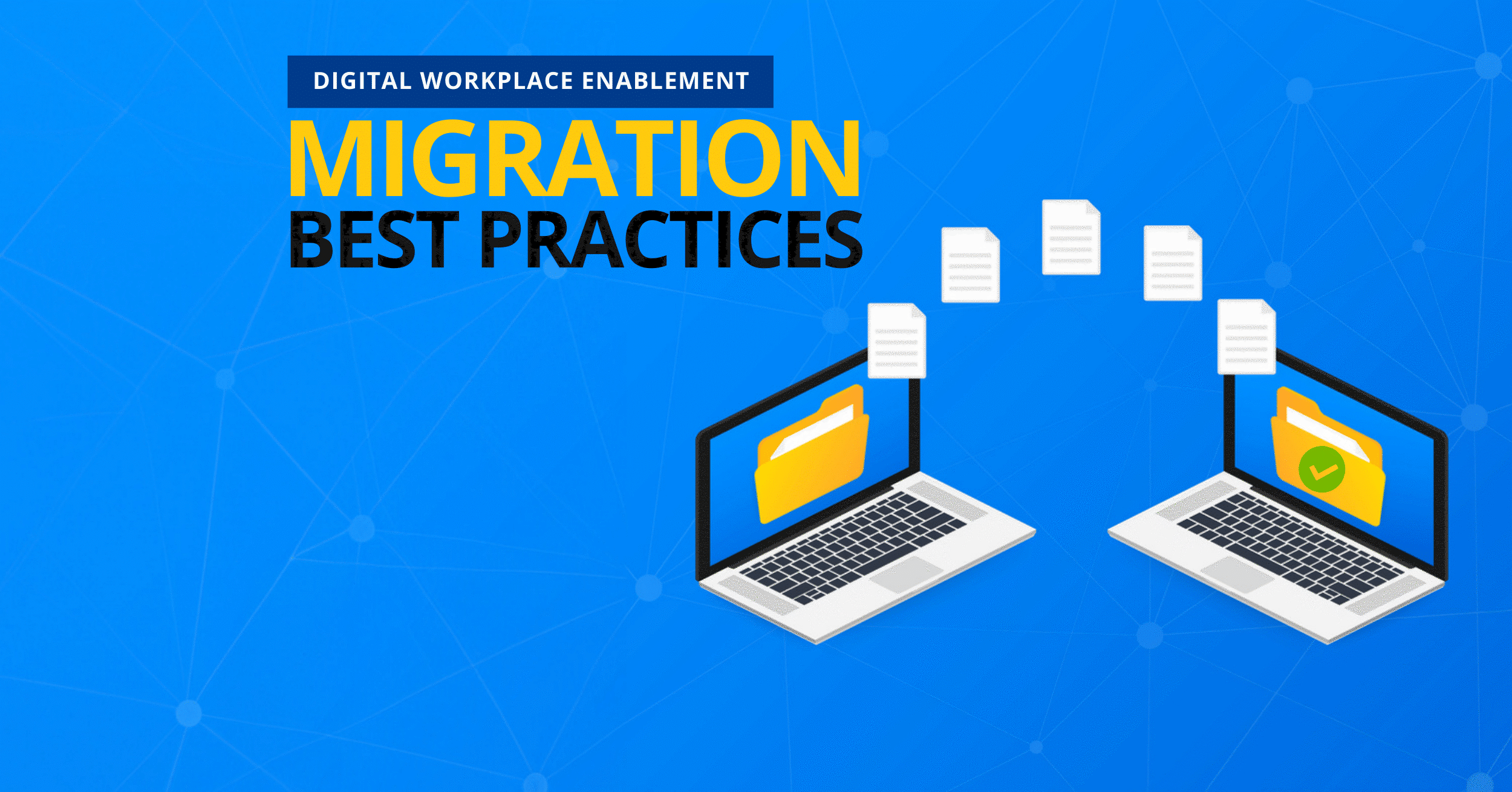Why Change Management is a Critical Factor in #Office365 Migrations


Are you determined to have your next migration go as smoothly as possible? We can help. Watch our free webinar-on-demand “Migration’s Biggest Challenges & How To Solve Them” for expert advice from AvePoint VP of Product Strategy Tony Coppa.
When beginning conversations about cloud migration, the first question out of almost every client’s mouth is “How fast can you move the data?” I honestly wondered the same thing when I first started conducting enterprise migrations.
However, after 5 years performing some of the largest and most complex Office 365 migrations, one of my key takeaways is this: We can provide almost any speed you can imagine. I’ve been involved in migrations at 500gb per day. The real question is, are you ready for that level of change?

Change management is a facet of migration that often flies under the radar. You can introduce as many new systems to your employees as you want, but unless the proper processes have been put in place, end users typically bounce right off. How you implement change management when working on an enterprise migration depends entirely on what kind of migration it is.
For me, I’d say there are 2 types of enterprise migrations which is mostly dependent on your source environment:
- Structured legacy content systems.
- Unstructured legacy content systems.
When talking about structured legacy content systems, the ones I typically get asked about are platforms such as Documentum, eRooms, TRIM, iManage, Lotus Notes and older versions of SharePoint. Although these might be reaching the end of their useful life for your business, they can still provide structure to your documents and information. They can also provide folders, permissions and metadata along with other rich features like versioning.
When migrating these types of environments you’re highly dependent on the quality of your migration software. These kinds of migrations require far more complicated technology due the increased number of metadata versions and properties stored in the legacy system databases.

You’re also more dependent on the software’s ability to give you a successful result. The upside, though, is that it is both easier to understand and dissect your source data and schedule and execute your migrations. The structure behind the software makes the content easier for users and the project team to understand.
Comparatively, unstructured legacy environments such as file shares can lead to headaches that make change management more difficult. File shares were often unmanaged, have been used for 10+ years, and have permissions and structures that are a total mess. Usually the permission model applied is “security by obscurity.” Even end users find locating data in these environments to be a nightmare.
Moving that into a structured environment such as SharePoint Online can be quite the departure from what customers are used to. It is these migrations that we find often require more soft skill engagement along with the standard planning, scheduling and training that comes from structured migrations.

Engaging Your Users
Getting back to speed vs. change management, let’s say you want to migrate 500GB of data per day. How many users are you impacting by doing that? How many of them will have to stop using a file share and start using SharePoint or Office 365 between a Friday and a Monday? And in that situation, how do you engage with them so that when they stop using file shares on Friday and they start using Office 365 on Monday, they can find everything they need?
All of these things are business challenges that the right technology partner can not only provide you the tools to solve, but the advice of someone who has been there before. There is no “One size fits all” answer; finding out what would work for your business is what matters.
Blog: 3 Key Factors in Solving Common Migration Roadblocks
We have done team-based releases, big bang releases, kiosks, floor walkers, communication via email or Yammer, you name it. It can take a week using the system before it goes live to understand it. There are many options and methods for ensuring a successful launch.
It is important to engage with users early so they know what the system structure is going to look like ahead of time. Communicate early, communicate often and provide visibility and transparency of how the migration is going. By doing this, you will go a long way in ensuring that your migration is successful.

Training
Recognizing the need to train your users is essential during a migration project, particularly when it comes to moving from an unstructured system to a structured system. You could certainly do 3TB per week, but are you ready to retrain your users and move them between systems that quickly? A speedy migration is important, but a successful project is what we ultimately strive to achieve for our clients.
There is little value in migrating to a new platform only to find that your users are working around its features because they don’t understand how to use them. Since we do a full migration initially, followed by a delta to pick up any changes, users can go in and look at what the “to be” state is prior to launch. This gives users a level of confidence and allows them to see what their future working environment will look like and how they will use it.

So, back to your million-dollar question: “How fast?” Our answer is: “How fast can your users handle?”
Based on previous engagements, a typical benchmark is 100GB per day. At this speed you’d be moving fast but still be able to have a phased go live with a different group/team/division every week or two. The key bit is to have your change management processes working in tandem with the migration.
Like what you read? Be sure to subscribe to our blog for more on migration.


